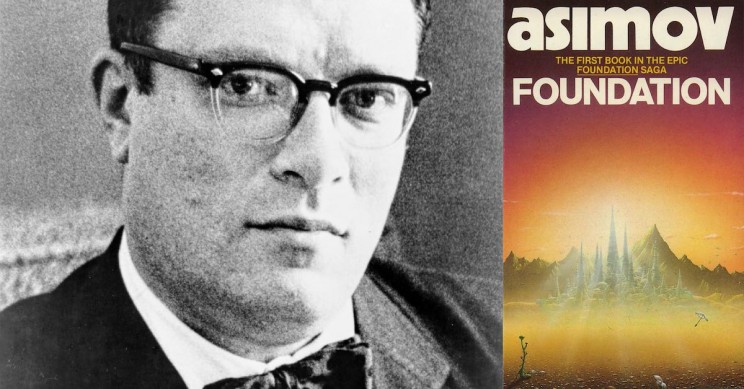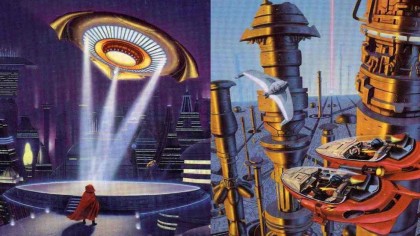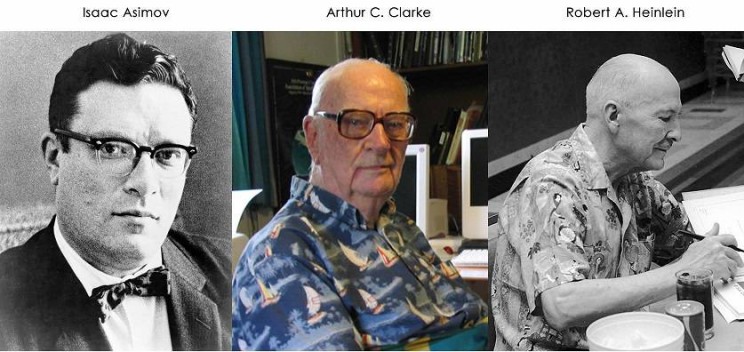Isaac Asimov was a highly prolific author and inspiration for many. His career started in 1939 when he first began writing sci-fi short stories.
Isaac Asimov is one of the world’s greatest authorsof all time. His work has inspired countless generations of children and adults to take up an interest in science and dare to dream of the future of mankind.
He was a bestseller and highly-renowned writer in his own time and his work can be found on many bookshelves around the entire world. In the following article, we’ll explore the life, times and work of this prodigious literary genius and pay homage to his legacy.
A Brief Biography of Isaac Asimov
Isaac Asimov was born sometime betweenOctober 4th, 1919 and January 2nd, 1920(the latter being the one he officially recognized) in Petrovichi near Klimpvivhi in the Russian Soviet Federative Socialist Republic.
His family would later emigrate to the United States in1923where they lived in Brooklyn, New York.
Between 1939 and 1948he would earn a B.Sc., MA, and Ph.D. and become a professor of biochemistry. He would also earn a plethora of awards and honors, become one of the most famous sci-fi authors of all time and have several of his works turned into blockbuster movies.
Asimov suffered a heart attack in 1977,had a triple bypass in 1983 and was infected with HIV during a related blood transfusion.
Isaac Asimov died in New York City on the 6th April 1992and was cremated.
What is Isaac Asimov famous for?
Isaac Asimov is widely recognized, and loved, as one of the best science fiction writers of all time. He has inspired countless generations of children and adults around the world and widened their understanding of space and science in general.
He was also a Professor of Biochemistry at Boston University.
For his fans, he stands as equals with other literary geniusesin the genre including the great Arthur C. Clarke, Robert Heinlein, Orson Scott Card and Philip K. Dick to name but a few.
Asimov was an incredibly prolific author who managed to write, or edit, over 500 booksexcluding many more short stories. His career started in 1939when he first began writing sci-fi short stories with his first novel, The Stars, Like Dust was published in 1951.
He kept writing until well into the early 1990’s with his last works published in around 1992. At that rate, he averaged around 12 books per year, quite incredible.
Asimov was not only a prolific individual book writer but wrote more sci-fi series than any other writer in his genre. Some of his contemporaries focussed on one universe or a few but Asimov created no less than 5 in total.
His most famous series being theFoundation series, Robot series, and Galactic Empire series. He also wrote Lucky Starr series, under the pen name Paul French, and Norby Chronicles with his wife Janet.
To date, there are also 20 compilationsof his many, many, short stories (numbering in the hundreds).
Isaac was also a brilliant factual science author as well as a, near peerless, science fiction author. He has been published in nine out of ten major categories of the Dewey Decimal Classification(which organizes library materials by discipline or field of study).
Some of his other works include Our Angry Earth, The Intelligent Man’s Guide to Science, Extraterrestrial Civilizations andAsimov’s Guide to Shakespeare. He truly was a man with an incredible talent for writing and an inspiration for any aspiring author.
Asimov was known as the best sci-fi writer in his lifetime
During his lifetime, Isaac Asimov was known as “One of the Big Three” science fiction writers. The other two being, the equally brilliant, Arthur Clarke (of 2001: Space Odessey fame but not exclusively) and Robert Heinlein (he wrote Starship Troopers and many more).
These three men are so-called as they are widely recognized for starting the “Golden Age” of science fiction writings in the mid-20th Century. Asimov, Clarke, and Heinlein are regularly quoted as influencing those authors who followed them, not to mention the general public interest in science fiction in general.
Asimov’s work has also literally changed the English lexicon forever. For example, the Oxford English Dictionary credits his science fiction work for introducing the words positronic (an entirely fictional technology), psychohistory (which is also used for a different study on historical motivations) and robotics.
Although Asimov and Heinlein held an uneasy friendship (they often had disagreements), he and Clarke were very close indeed. They first met in New York City in 1953and traded friendly jibes and insults for many years after.
“In accordance with the terms of the Clarke-Asimov Treaty, the second-best science writer dedicates his book to the second-best science fiction writer”.
Their friendship was optimized by the formulation of the so-called “Clarke-Asimov Treaty of Park Avenue” that they created in a cab ride in New York.
In effect, this ‘”treaty” meant that Asimov had to insist that Clarke was the best science fiction writer in the world, but Clarke must insist that Asimov was the best science writer in the world.
Thus the dedication in Clarke’s book Report on Planet Three and Other Speculations (1972) reads: “In accordance with the terms of the Clarke-Asimov treaty, the second-best science writer dedicates this book to the second-best science-fiction writer.”


